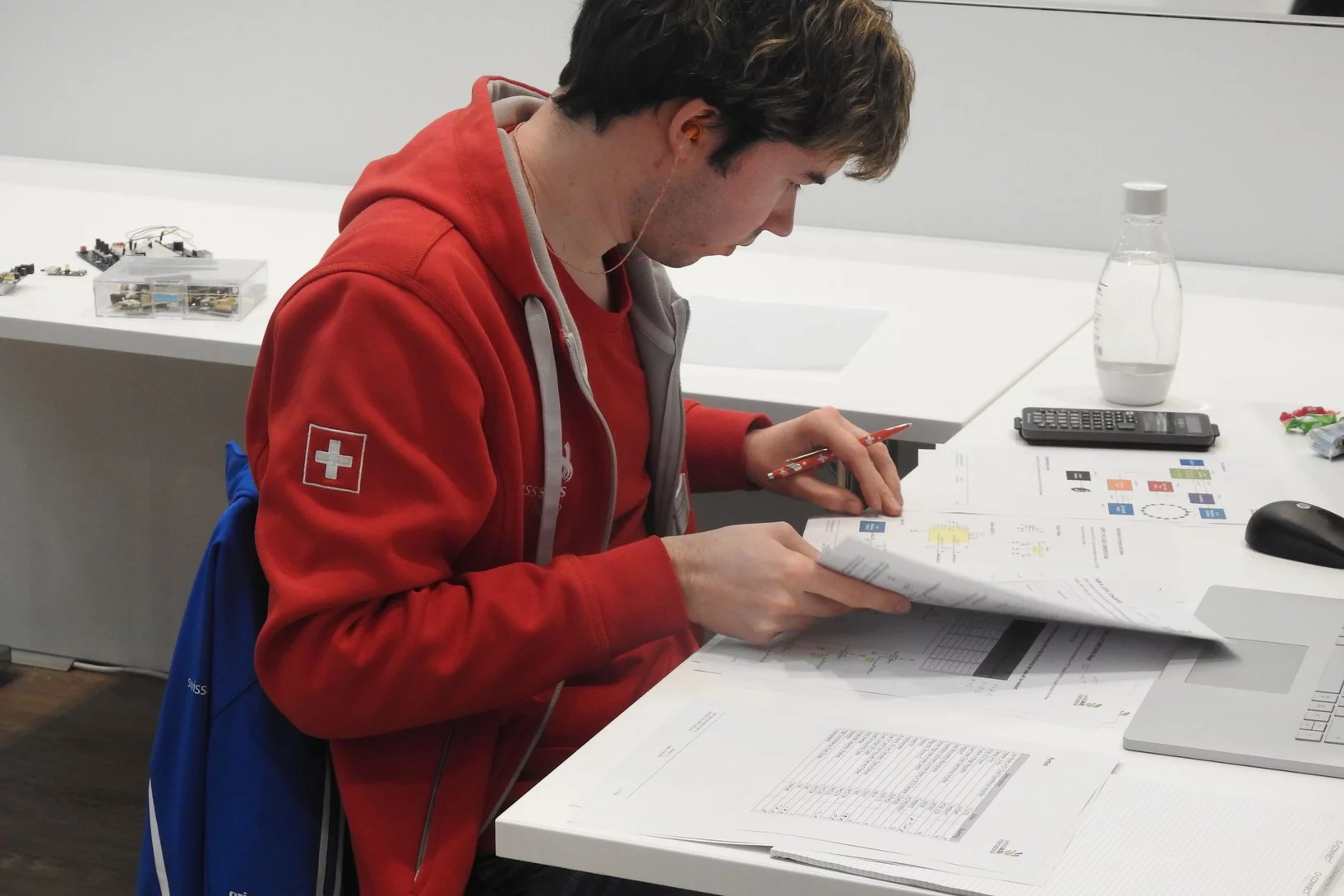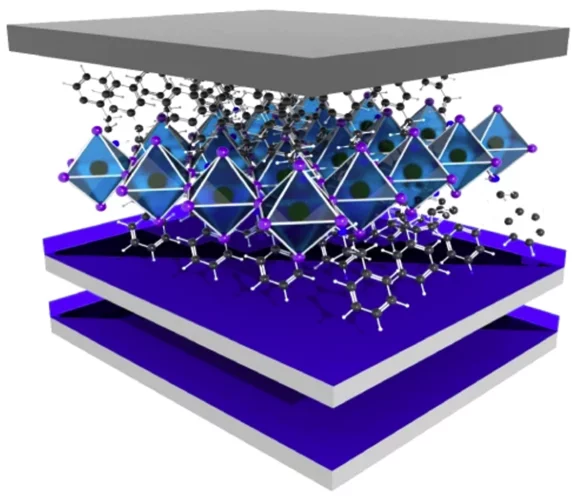Au PSI, plusieurs projets se consacrent à des questions de recherche importantes autour du coronavirus Sars-CoV-2 et des maladies qui en résultent. Nous vous informons sur les activités et les projets, par exemple sur les analyses de tissus pulmonaires, sur la production de protéines et d'anticorps ou sur les idées de nouvelles recherches sur le Covid-19.
Liens utils
Optical Setup for a Piston-Cylinder Pressure Cell: A Two-Volume Approach
Measurement of the absolute value of the applied pressure in high-pressure muon and neutron experiments is a complicated task. It often requires the presence of a calibration material inside the sample volume, and could also cause additional time to obtain the response of the calibrant. Here we describe the use of optical calibrants for precise determination of the pressure value inside the piston-cylinder clamp cells.
CNRS movie on n2EDM
Our French collaborators and CNRS produced an excellent short movie about our common n2EDM experiment. The apparatus is currently being set up in
UCN Area South. The collaboration is on track for commissioning of the apparatus with neutrons towards the end of 2022.
Mobile excitons as neutral information carriers
These quasiparticles have the potential to revolutionise electronics - if they can move. Mobile excitons have now been observed for the first time in a metal.
Vorbereitung WorldSkills 2022
Der Countdown für Shanghai ist gezündet, alles Gute Mario!
Operando X-ray Tomographic Microscopy of Polymer Electrolyte Fuel Cell Freeze Start
Understanding the water management in polymer electrolyte fuel cells (PEFCs) during sub-zero operation is crucial for designing effective freeze start strategies. In collaboration with Toyota Motor Europe sub-second X-ray tomographic microscopy was used to study the water distributions in the gas diffusion layer (GDL) of PEFCs during dynamic freeze starts from −30 °C that mimic automotive freeze start conditions at different pre-drying levels and varying the feed gas humidity.
Cu-doping effects on the ferromagnetic semimetal CeAuGe
We present a study of Cu-substitution effects in 4f-Ce intermetallic compound CeAu1-xCuxGe, with potentially unusual electronic states, in the whole concentration range (x = 0.0 – 1.0). The parent CeAuGe compound, crystallizing in a non-centrosymmetric hexagonal structure, is a ferromagnetic semimetal with Curie temperature 10 K. Cu-doping on Au-site of CeAuGe, CeAu1-xCuxGe, changes the crystal structure from the non-centrosymmetric (P63mc) to centrosymmetric (P63/mmc) space group at the concentration x ∼ 0.5, where the c-lattice constant has a maximum value. Magnetic susceptibility and electrical resistivity measurements reveal that all Cu-doped compounds undergo magnetic phase transition near 10 K, with the maximum transition temperature of 12 K for x = 0.5. The neutron powder diffraction experiments show the ferromagnetic ordering of Ce3+ magnetic moments with a value of about 1.2 μB at 1.8 K, oriented perpendicular to the hexagonal c-axis. By using symmetry analysis, we have found the solutions for the magnetic structure in the ferromagnetic Shubnikov space groups Cmc'21′ and P21′/m' for x < 0.5 and x ≥ 0.5, respectively. Electrical resistivity ρ(T) exhibits a metallic temperature behaviour in all compositions. The resistivity ρ(T) has a local minimum in the paramagnetic state due to Kondo effects at high doping x = 0.8 and 1.0. At the small Cu-doping level, x = 0.2, the resistivity shows a broad feature at the ferromagnetic transition temperature and an additional transition-like peculiarity at 2.5 K in the ferromagnetic state.
Antiferromagnetic excitonic insulator state in Sr3Ir2O7
Excitonic insulators are usually considered to form via the condensation of a soft charge mode of bound electron-hole pairs. This, however, presumes that the soft exciton is of spin-singlet character. Early theoretical considerations have also predicted a very distinct scenario, in which the condensation of magnetic excitons results in an antiferromagnetic excitonic insulator state. Here we report resonant inelastic x-ray scattering (RIXS) measurements of Sr3Ir2O7.
Restrictions to enter Switzerland have been disposed
As of 17 February 2022 Switzerland has disposed all COVID-related restrictions to enter the country. For the time being certificates for vaccination or negative tests are no longer required.
PSI am diesjährigen KMU Swiss Symposium!
Am 17. März findet das diesjährige KMU Swiss Symposium in Baden statt – wir freuen uns, dass wir dieses Jahr wieder physisch vor Ort dabei sind!
Das KMU Swiss Symposium bietet eine Plattform für Austausch und Inspiration – dies wird ermöglicht durch spannende Referate, diverse Messestände mit innovativen Projekten und Networking.
Auch die Bundesrätin Viola Amherd wird am 17. März in Baden zu Gast sein und wird die Eröffnungsrede halten, gefolgt von weiteren hochkarätigen Referenten, unter anderem Nina Suma, die Geschäftsführerin des Badener Thermalbades «Fortyseven», Neurowissenschaftlerin Claudia Thali, Thomas Boyer, CEO der Groupe Mutuel sowie Guido Konrad, Geschäftsführer Varian Medical Imaging Labs.
Das PSI ist mit dabei – besuchen Sie uns an unserem gemeinsamen Stand mit dem Hightech Zentrum Aargau und erfahren Sie mehr darüber, wie wir Industrie und KMU bei Ihren technischen Herausforderungen und Innovationsprozessen unterstützen können.
Lighting up the appealing world of hybrid perovskites
Researchers from Italy, in collaboration with the Paul Scherrer Institut, successfully used the macromolecular crystallography beamline X06DA-PXIII at the Swiss Light Source to characterize promising perovkites materials used in solar cells and other photodetector devices.
Internationaler Tag der Frauen und Mädchen in der Wissenschaft am 11. Februar
Am 11. Februar war der Internationale UNESCO-Tag der Frauen und Mädchen in der Wissenschaft. Einige unserer Mitarbeiterinnen in der Forschung haben sich hierzu vorgestellt. Was begeistert sie an der Forschung? Die Antwort dazu und ihre Profile sind auf unserer Webseite zu finden und können über LinkedIn und Twitter kommentiert und geteilt werden.
Opening the door to X-ray quantum optics
The 'perfect' X-ray beam-splitter: Researchers at SwissFEL have an ingenious solution to produce coherent copies of pulses, facilitating a realm of new X-ray techniques.
Low-energy spin dynamics in rare-earth perovskite oxides
A team of scientists from Paul Scherrer Institut and Oak Ridge National Laboratory review recent experimental studies of spin dynamics in the rare-earth perovskite materials. These compounds show unconventional magnetic excitations at low temperatures, including confined and deconfined spinons as well as multimagnon states, which were revealed by means of high-resolution neutron spectroscopy. These observations demonstrate that the rare-earth perovskite magnets can provide realizations of various aspects of quantum low-dimensional physics.
Rent-a-Stift
Anfang Oktober erhielten wir von Ask! ein Coaching in Auftrittskompetenz und Präsentationstechnik. Ab Anfang Dezember besuchten wir dann in 2er-Gruppen den Unterricht an verschiedenen Schulen und hielten einen Vortrag über unsere persönliche Erfahrung bei der Lehrstellensuche, unserem Lehralltag und im Lehrbetrieb.
Journée internationale des femmes de science
Journée internationale des femmes de science: nous présentons sept femmes qui travaillent au PSI.
Arbeiten im Homeoffice
Im Januar 2022 haben die Automatiker des 1. Lernjahres im Homeoffice ihre ersten eigenen Erfahrungen gemacht.
ESUO questionnaire on impacts of absence of TNA funding
ESUO, the European Synchrotron and FEL Users Organisation, has launched a questionnaire on the Possible impacts of the absence of TransNational Access (TNA) funding for the user community. ESUO, in cooperation with LEAPS, kindly asks you as users of photon facilities to fill in that questionnaire.
The outcome of the questionnaire will empower ESUO to continue advocating both to the European Commission and to the National Funding Agencies for TNA funding for all science topics and for all scientists.
New insight into unconventional superconductivity
Signatures for a novel electronic phase that enables charge to flow spontaneously in loops have been observed in a kagome superconductor. The findings are published today in Nature.
Les bruits de la recherche
Peut-on voir les bruits? Non, bien sûr. Néanmoins, cette galerie tente l’impossible et jette un pont optique vers l’environnement sonore que l’oreille perçoit au PSI.
New Head of Laboratory for Energy Systems Analysis (LEA)
As of February 1st 2022, Russell McKenna joins the Paul Scherrer Institute’s Laboratory for Energy Systems Analysis (LEA) as head of the Laboratory. The position at PSI and the full professorship at ETHZ will enable him to combine his research with teaching activities. This optimally reinforces the cooperation between ETH Zurich and the two energy sectors, ENE and NES, of the PSI.
Optimization of catalyst performance to increase efficiency of methanol production
Many types of catalysts have been well known for decades, but the fundamental understanding as to why they work so well is still not quite clear. Without this understanding, an even more efficient catalyst cannot be developed, which is needed to reduce the global energy demand. Copper-zinc-alumina (CZA) is a popular catalyst and has been used for about 100 years, as it facilitates the production of the important chemical building block methanol, a molecule that enables the storage of hydrogen in a manner that minimizes negative impact on the carbon-dioxide footprint. Until 2021, scientists debated over the reason why the catalyst works so well. Understanding the reason behind this is vital in order to further develop even better ones. The copper-zinc-alumina (CZA) catalyst is assessed at the Laboratory for catalysis and sustainable chemistry (LSK) of the Paul Scherrer Institute.
How to get chloride ions into the cell
A molecular movie shot at PSI reveals the mechanism of a light-driven chloride pump
Une simulation pour faire avancer les travaux de déblaiement à Fukushima
Une nouvelle simulation des débris radioactifs les plus dangereux de la centrale nucléaire de Fukushima devrait faire avancer les travaux de déblaiement.
Neuer Aktionsplan Diversität, Chancengerechtigkeit und Inklusion 2021-2024
Der neue Aktionsplan Diversität, Chancengerechtigkeit und Inklusion 2021-2024 ist jetzt online. Hier ist der Link mit der Übersicht und dem vollständigen Dokument.
Les fumiers: des sources d'énergie sous-utilisées
Les fumiers contiennent une quantité d’énergie trop peu utilisée, confirme un livre blanc rédigé par des chercheurs suisses en bioénergie.
Exploring the role of structural distortions to obtain Cu photosensitizer with thousand times longer excited state lifetime
Cu diimine complexes present a noble metal free alternative to classical Ru, Re, Ir and Pt based photosensitizers in solution photochemistry, photoelectrochemical or dye-sensitized solar cells. Optimization of these dyes requires an understanding of factors governing the key photochemical properties: excited state lifetime and emission quantum yield. Using pump-probe XAS and DFT calculations we have explored the involvement of exciplex formation in the deactivation of the photoexcited state.
New Laboratory Technician Christian Hanisch
A new colleague, Christian Hanisch, started on February 1, 2022, as a technician in the Laboratory for Catalysis and Sustainable Chemistry and we warmly welcome him.
Ein Homeoffice-Tag eines Chemielaboranten
Wie funktioniert eigentlich Spülmittel? Das sind die Erkenntnisse eines Chemielaboranten.
Andrea Baccarini, former member of the Laboratory of Atmospheric Chemistry, awarded the ETH Medal for his PhD thesis
Andrea Baccarini, a former PhD student at the Laboratory of Atmospheric Chemistry, has been awarded the ETH Medal for his thesis investigating aerosol formation in the Arctic and Antarctic and the role aerosols play in climate change.
Diagnostiquer l’asthme dans un souffle
Le PSI participe au développement d’un test respiratoire, grâce auquel il devrait être possible de diagnostiquer l’asthme. Une interview avec Imad El Haddad.


























